A Brief History of Typewriters

The idea of a typewriter dates back to 1714. However, it was not until 1808 that Pellegrino Turri, an Italian inventor, invented the first working typewriter. He built the typewriter to aid his friend Countess Carolina Fantoni da Fivizzano. Unfortunately, there are no records of the typewriter’s image, but there are specimens of letters the countess wrote using it.
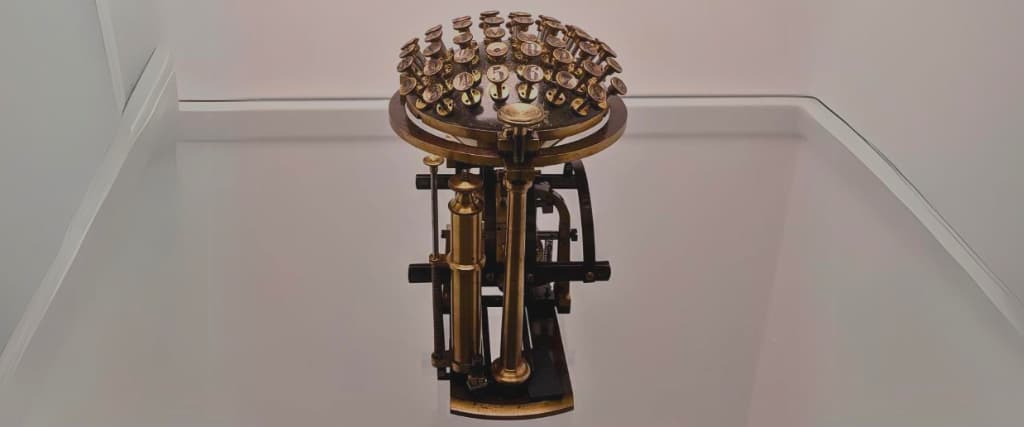
In the 19th Century, several inventors in the United States and Europe worked on typewriters, but their commercial productions started with Rasmus Malling-Hansen’s writing ball in 1870. The device was relatively well-engineered despite resembling a pincushion.
Sholes and Glidden Typewriter were next. Its production began towards the end of 1873, and it was made available in the American market in the following year.

Christopher Sholes played a significant role in inventing this machine. This can be attributed to his involvement in the newspaper section, as he was Milwaukee’s paperman during that period.
Sholes and Glidden typed in qwerty form, used today in almost all keyboards. An interesting fact about the typewriter is that it only typed in capital letters.
Well, that may be excused due to its time. It is believed that the keyboard’s design was set to avoid clashing of the typebars when printing by separating pairs of typebars that were frequently used; this was crucial in ensuring they didn’t get stuck. Since the Remington arms sewing machine department manufactured this decorative machine, it looked more like a sewing machine.
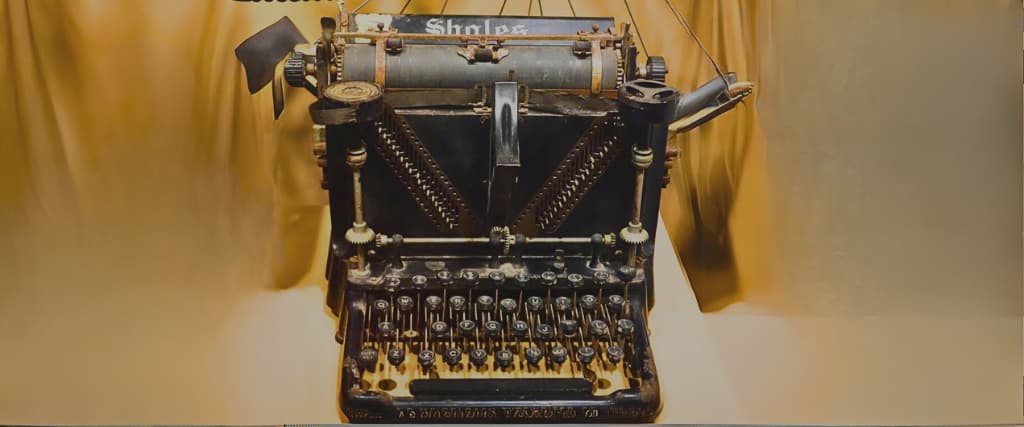
The Sholes and Glidden played their part in the industry and soon became a top favourite. But it was just a matter of time before something better and more convenient came in.
Like many early typewriters, the Sholes and Glidden were blind typewriters due to their design. Its printing surface consisted of a circular basket placed under the platen as its bottom type. The typewriter was thus called blind since the typist could not see what they were typing, so they had to lift the carriage to view their work physically.
Sholes purposely designed the typewriter for printing page numbers. However, Glidden realised it could do more than just print numbers; he suggested they use it for letters as well. Another typewriter with the same operational mechanisms was the Caligraph built in 1880. It was the second typewriter to be introduced in the American market.
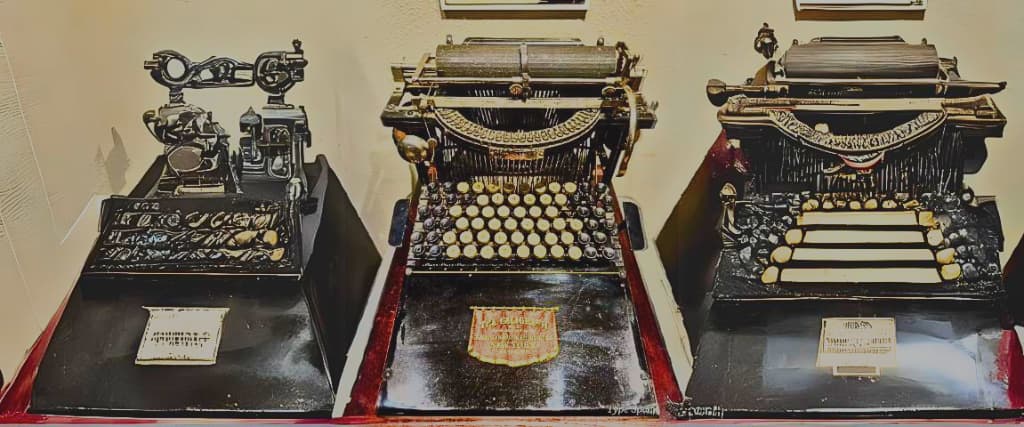
The Caligraph was designed with a full keyboard which contained both upper and lower case letters, making it easier for typists to select the set of keys to use.
Another understroke typewriter equipped with a full keyboard is the Smith Premier, introduced in 1890. It was quite popular during its time and was cherished by many.

With time, the QWERTY keyboard took shape in the market. It became so common among typists that typewriter manufacturers adopted its concept due to ease of mastery and use. It did not take long before it was recognised as the “Universal Keyboard”, rendering all other keyboards obsolete.

However, not all typewriters adopted the qwerty system as every inventor was still trying to come up with easy-to-use keyboards. For instance, introduced in 1884, the Hammond was built with its keyboard, not qwerty. It was a curved keyboard with two rows. Later on, Universal Hammonds were also built.
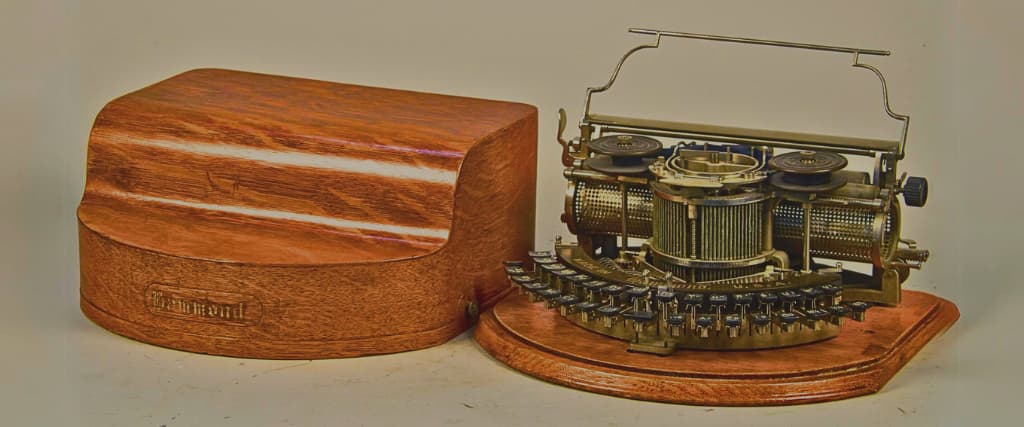
The Hammonds C-shaped Vulcanized rubber, also known as type shuttle, aids in printing and is easily changed when there is a need to change the typeface when typing. Unlike the other typewriters, this typewriter does not have a cylindrical platen; the task is done by a hammer, which hits against the shuttle.
The Hammond was durable and stood the test of time. It was widely used and carried on until the introduction of the word processor.
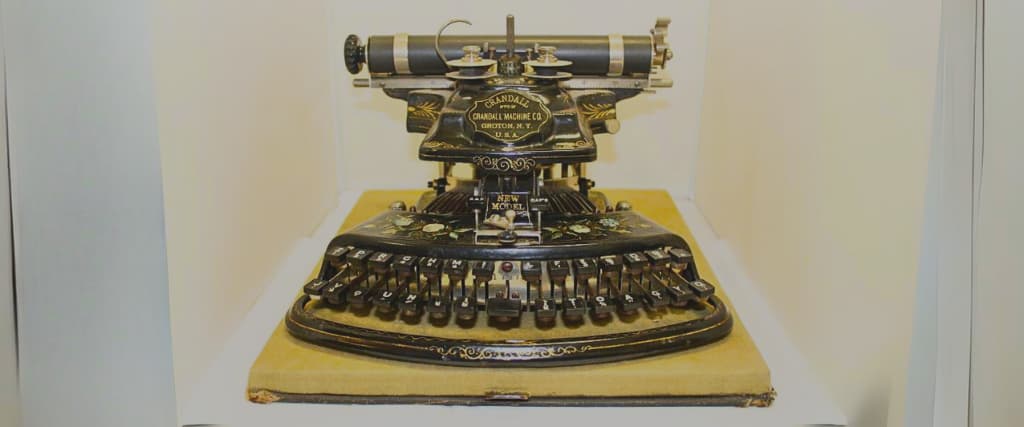
Crandall (1881) and Blickensderfer also operated like the Hammond; they did not use typebars.
Typing using the blind typewriters was relatively challenging. Inventors and innovators kept on trying to make typing visible. There was a need for accuracy, and fast action, so newer and better typewriters did not take long to gain popularity. The typebars had to be moved to the platen.
The Daughtery Visible got into production in 1891 as the first-ever front stroke typewriter; its typebars are set below the platen and hit it from the front. The form was simple; they were equipped with qwerty keyboards, front strokes, typebar machines, four banks of keys and a single shift key.
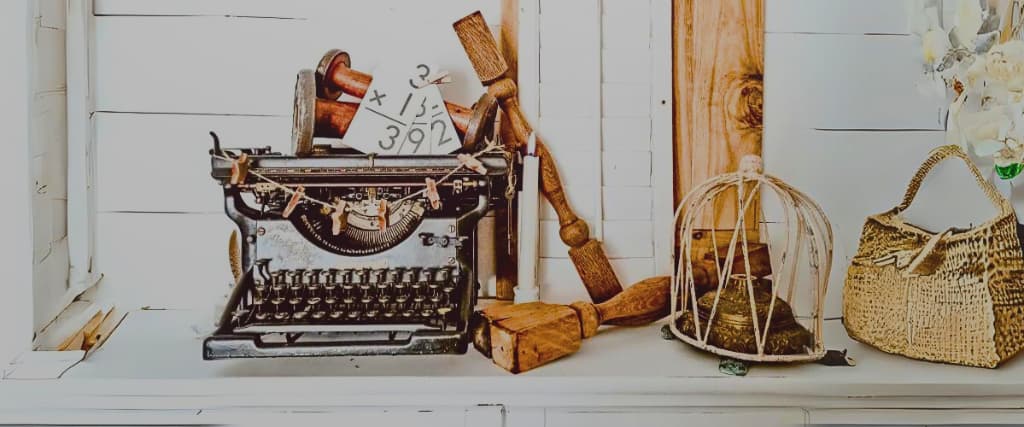
These typewriters gained more popularity from 1895 when the Underwood was introduced. Millions of the Underwood’s #5 models were produced during that period. In the 1920s, typewriters’ models had gained form, and their inventions had dropped, letting the current producers adopt and maintain what they had by then, perhaps making them a little better.
Most manufacturers went for the front stroke typewriters. However, this does not mean the blind typewriters were completely done away with. Some blind typewriters like the Burroughs Moon-Hopkins typewriter remained in production till the 1940s.

In the 19th Century, a standard typewriter was about 100 dollars. With the right calculations involving the current currency and adjusting to the inflation state, the cost of one typewriter is equivalent to that of several standard personal computers. That was quite expensive, so index typewriters were produced as cheaper alternatives. The American Index typewriter was easy to use and was sold for $5. Index typewriters survived into the 20th Century, and when they became outdated, they were used as children’s toys.
The typing world developed relatively fast. What a journey for typewriters!
I love typewriters! I’m not really sure why but maybe it’s because typewriter shops were always very interesting places to visit. The typewriters themselves were beautiful objects; inlaid with mother-of-pearl, chrome tubes, shining levers
